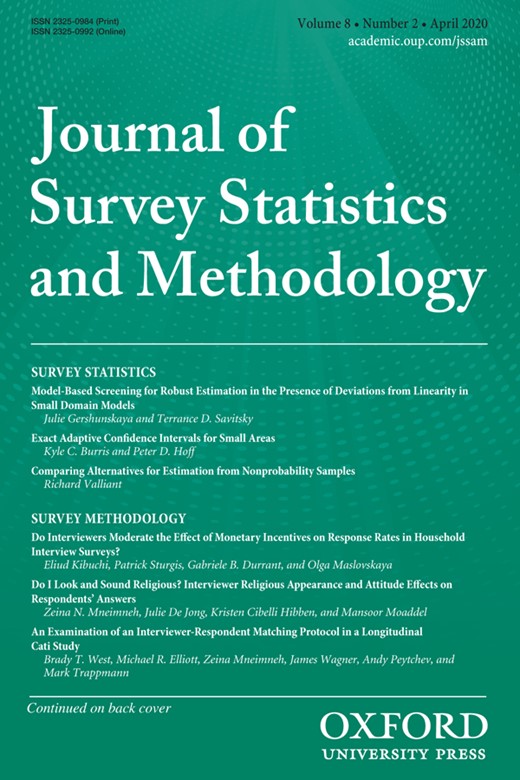-
Views
-
Cite
Cite
Michael T Jackson, Cameron B McPhee, Paul J Lavrakas, Using Response Propensity Modeling to Allocate Noncontingent Incentives in an Address-Based Sample: Evidence from a National Experiment, Journal of Survey Statistics and Methodology, Volume 8, Issue 2, April 2020, Pages 385–411, https://doi.org/10.1093/jssam/smz007
Close - Share Icon Share
Abstract
Monetary incentives are frequently used to improve survey response rates. While it is common to use a single incentive amount for an entire sample, allowing the incentive to vary inversely with the expected probability of response may help to mitigate nonresponse and/or nonresponse bias. Using data from the 2016 National Household Education Survey (NHES:2016), an address-based sample (ABS) of US households, this article evaluates an experiment in which the noncontingent incentive amount was determined by a household’s predicted response propensity (RP). Households with the lowest RP received $10, those with the highest received $2 or $0, and those in between received the standard NHES incentive of $5. Relative to a uniform $5 protocol, this “tailored” incentive protocol slightly reduced the response rate and had no impact on observable nonresponse bias. These results serve as an important caution to researchers considering the targeting of incentives or other interventions based on predicted RP. While preferable in theory to “one-size-fits-all” approaches, such differential designs may not improve recruitment outcomes without a dramatic increase in the resources devoted to low RP cases. If budget and/or ethical concerns limit the resources that can be devoted to such cases, RP-based targeting could have little practical benefit.







